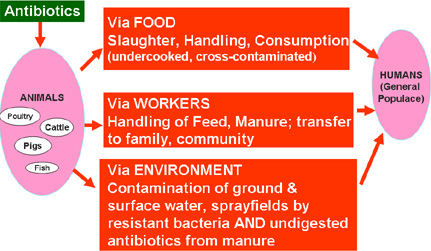- Fitness (19)
- News & Reviews (25)
- Nutrition (20)
- Science (10)
- Supplements (6)
- Technologies (8)
- The Arts (9)
Risks of Pill-Popping: Side Effects in the News
September 1st, 2015
By Cathie Dunal, MD, MPH: A few months ago we were astonished to learn that common medications—sleep meds like Sonata and Ambien, anxiety meds like Xanax and Valium, and over-the-counter allergy meds like Benadryl and Chlor-Trimeton—are all associated with increased risk of Alzheimer’s disease. A five percent increased risk with as little as ninety days of use in your lifetime! Yikes!
The latest medicine surprise is NSAIDS, or non-steroidal anti-inflammatories. They bring a ten to fifty percent increased risk of “cardiovascular thrombotic events”—heart attacks and strokes. We pop these pills like candy—the most common are Motrin/ibuprofen, Aleve/naproxen, and prescription anti-inflammatories. The new advisory from the FDA is to take as little as possible for as short a time as possible.
My take is that we ought to wake up to the possibility that popping a pill isn’t the optimal first step to treating medical conditions. (Note that I’m not talking about serious infections, endocrine conditions, etc.) The first step should be prevention via lifestyle. The next first step, assuming a problem is already raising its ugly head, is lifestyle treatment. Then—but only after addressing immediate and preventive lifestyle interventions—we should delve into non-pharmacological interventions–and prescriptions.
Let’s take aches and pains as an example. Continue reading »
Filed under News & Reviews, Science | Comments Off on Risks of Pill-Popping: Side Effects in the NewsAntibacterial Personal Care Products Are Linked to Allergies in Children
June 20th, 2012
 From Science Daily (June 19, 2012) This study gives us yet another reason to use more natural products! Cathie— Exposure to common antibacterial chemicals and preservatives found in soap, toothpaste, mouthwash and other personal-care products may make children more prone to a wide range of food and environmental allergies, according to new research from Johns Hopkins Children’s Center. Results of the NIH-funded study are published online ahead of print June 18 in the Journal of Allergy and Clinical Immunology.
From Science Daily (June 19, 2012) This study gives us yet another reason to use more natural products! Cathie— Exposure to common antibacterial chemicals and preservatives found in soap, toothpaste, mouthwash and other personal-care products may make children more prone to a wide range of food and environmental allergies, according to new research from Johns Hopkins Children’s Center. Results of the NIH-funded study are published online ahead of print June 18 in the Journal of Allergy and Clinical Immunology.
Using existing data from a national health survey of 860 children ages 6 to 18, Johns Hopkins researchers examined the relationship between a child’s urinary levels of antibacterials and preservatives found in many personal-hygiene products and the presence of IgE antibodies in the child’s blood. IgE antibodies are immune chemicals that rise in response to an allergen and are markedly elevated in people with allergies.
“We saw a link between level of exposure, measured by the amount of antimicrobial agents in the urine, and allergy risk, indicated by circulating antibodies to specific allergens,” said lead investigator Jessica Savage, M.D., M.H.S., an allergy and immunology fellow at Hopkins. Continue reading »
Antibiotic Resistance
September 16th, 2011

A Report from the Physicians Committee for Responsible Medicine: The growing public health threat of antibiotic resistance is almost entirely attributed to antimicrobial use in animal agriculture.
Animals raised for meat and dairy products are routinely treated with antibiotics to promote growth and reduce the risk of illnesses that would otherwise be common in crowded living conditions. Currently, 80 percent of antibiotics used in the United States are administered to animals on farms.
Widespread use of antibiotics can give rise to resistant bacteria, which may or may not cause disease in the animals. Through contact with farm workers and contaminated waste runoff, resistant bacteria can spread to humans and to other animals.
Bacteria can also transfer resistance traits to other strains and classes of bacteria.
So the fewer antibiotics we consume on a daily basis through animal products, the healthier we’ll be! — Cathie
Filed under Science | Comments Off on Antibiotic ResistanceMeditation For ADHD Teens & Adults
May 1st, 2011
 Mindfulness meditation significantly helped three-quarters of the participants in a study described here by Dr. David Rabiner: Because of the wide spread interest in new ADHD interventions — particularly non-pharmaceutical approaches — I try to cover credible research in this area when ever I come across it. I was thus pleased to learn about a very interesting study of mindfulness meditation as a treatment for adults and adolescents with ADHD that was published in the Journal of Attention Disorders.
Mindfulness meditation significantly helped three-quarters of the participants in a study described here by Dr. David Rabiner: Because of the wide spread interest in new ADHD interventions — particularly non-pharmaceutical approaches — I try to cover credible research in this area when ever I come across it. I was thus pleased to learn about a very interesting study of mindfulness meditation as a treatment for adults and adolescents with ADHD that was published in the Journal of Attention Disorders.
Although medication treatment is effective for many individuals with ADHD, including adolescents and adults, there remains an understandable need to explore and develop interventions that can complement or even substitute for medication. (…)
In recent years, mindfulness meditation has been used as a new approach for stress reduction and incorporated into the treatment for a variety of psychiatric disorders, including depression, anxiety, and substance abuse. Of special relevance to the treatment of ADHD are findings that meditation has the potential to regulate brain functioning and attention. For example, research has demonstrated that mindfulness meditation can modify attentional networks, modulate EEG patterns, alter dopamine levels, and change neural activity.
Filed under News & Reviews | Comments Off on Meditation For ADHD Teens & AdultsWestern Diets Are Making the World Sick
April 16th, 2011
 From NPR’s ‘Fresh Air’: When physician Kevin Patterson described his experiences working at the Canadian Combat Surgical Hospital in Afghanistan, he noticed that the Afghan soldiers, police and civilians he treated in Kandahar had radically different bodies from those of the Canadians he took care of back home.
From NPR’s ‘Fresh Air’: When physician Kevin Patterson described his experiences working at the Canadian Combat Surgical Hospital in Afghanistan, he noticed that the Afghan soldiers, police and civilians he treated in Kandahar had radically different bodies from those of the Canadians he took care of back home.
“Typical Afghan civilians and soldiers would have been 140 pounds or so as adults. And when we operated on them, what we were aware of was the absence of any fat underneath the skin,” Patterson says. “Of course, when we operated on Canadians or Americans or Europeans, what was normal was to have most of the organs encased in fat.”
In a conversation on Fresh Air, Patterson tells Terry Gross that the effects of urbanization are making people everywhere in the world both fatter and sicker.
“Type 2 diabetes historically didn’t exist, only 70 or 80 years ago,” says Patterson. “And what’s driven it is this rise in obesity, especially the accumulation of abdominal fat. That fat induces changes in our receptors that cells have for insulin. Basically, it makes them numb to the effect of insulin.”
He explains that the increase in abdominal fat has driven the epidemic of diabetes over the last 40 years in the developed world — and that he’s now seeing similar patterns in undeveloped regions that have adopted Western eating patterns.
Patterson explains that in his Canadian practice, where he takes care of indigenous populations near the Arctic Circle, there is a marked increase in the number of diabetic patients he sees. “The traditional Inuit culture of relentless motion and a traditional diet consisting mainly of caribou, Arctic char, whale and seal has been abandoned over this period of time for Kentucky Fried Chicken and processed food and living a life very similar to ours,” he says.
Part of the problem, says Patterson, is that it’s so much cheaper for processed food to be flown into the Arctic Circle than fresh food. “There’s no roads or rail access to any of those communities,” he says. “So a 4 liter jug of milk can cost you $10 or $11. But there’s a very clear parallel between that and the inner city. In poorer neighborhoods in North American cities, fresh food is either not available or extremely expensive compared to — on a calorie-by-calorie basis — compared to fast food available on every street corner.” Continue reading »




